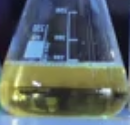| "Descrizione" by Nat45 (5724 pt) | 2023-Nov-21 10:57 |
Review Consensus: 7 Rating: 7 Number of users: 1
| Evaluation | N. Experts | Evaluation | N. Experts |
|---|---|---|---|
| 1 | 6 | ||
| 2 | 7 | ||
| 3 | 8 | ||
| 4 | 9 | ||
| 5 | 10 |
Coco-caprylate is a chemical compound, mixture of esters resulting from the reaction of fatty alcohols derived from coconut alcohol with caprylic acid. The formulation refers to an ester with an emollient function of C8-10 fatty acids bonded to C12-18 fatty alcohols.
The name describes the structure of the molecule:
- Coco refers to coconut oil, which is the source of this ingredient. Coconut oil is known for its moisturizing and nourishing properties.
- caprylate is an ester derived from caprylic acid. Esters are chemical compounds formed from the reaction of an acid and an alcohol. In this case, caprylic acid, a medium-chain fatty acid, reacts with alcohol to form a light, non-greasy ester.
Raw Materials Used in Production.
Coco-Caprylate is a synthetic emollient derived from natural fatty acids of coconut and caprylic alcohol. Coconut fatty acids come from coconut oil, while caprylic alcohol is generally obtained from plant sources or synthesized.
Step-by-step Summary of Industrial Production Process.
- Extraction of fatty acids from coconut oil.
- Production or procurement of caprylic alcohol.
- Reaction of coconut fatty acids with caprylic alcohol to form Coco-Caprylate.
- Purification of Coco-Caprylate to remove any impurities.
- Quality control to ensure the product meets technical and safety specifications.
Form and Color
Coco-Caprylate appears as a clear, colorless or slightly yellow liquid with an oily consistency.

What it is used for and where
Cosmetics
It is used in cosmetic products, mainly in hand and face creams.
Its function is to soften the skin and leave it dry.
Skin conditioning agent - Emollient. Emollients have the characteristic of enhancing the skin barrier through a source of exogenous lipids that adhere to the skin, improving barrier properties by filling gaps in intercorneocyte clusters to improve hydration while protecting against inflammation. In practice, they have the ability to create a barrier that prevents transepidermal water loss. Emollients are described as degreasing or refreshing additives that improve the lipid content of the upper layers of the skin by preventing degreasing and drying of the skin. The problem with emollients is that many have a strong lipophilic character and are identified as occlusive ingredients; they are oily and fatty materials that remain on the skin surface and reduce transepidermal water loss. In cosmetics, emollients and moisturisers are often considered synonymous with humectants and occlusives. It is therefore a rather light emollient.
Commercial Applications
Primarily used in cosmetic products as an emollient. It is valued for its ability to make the skin smooth without leaving a greasy feeling. It is also used to enhance the spread and absorption of other ingredients in skincare products.
Molecular Formula C42H84O4
Molecular Weight 653.1g/mol
CAS 95912-86-0
Safety
No cases of allergy have been reported
| Evaluate |

